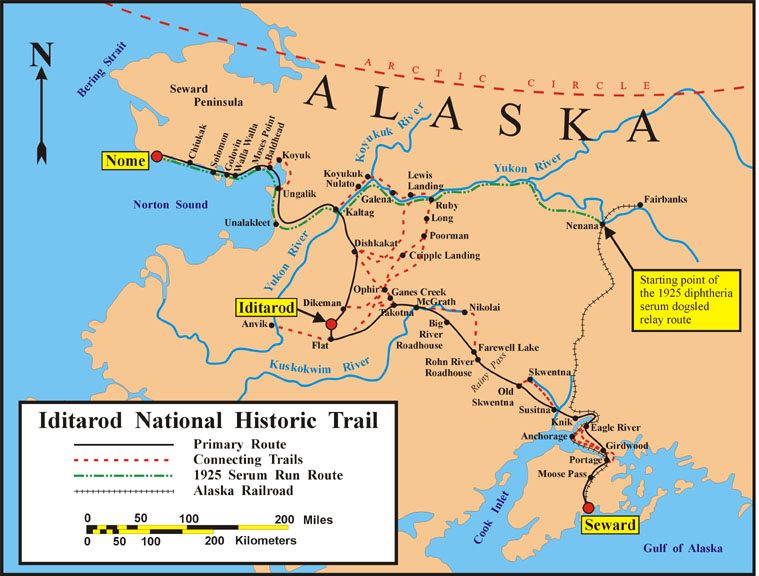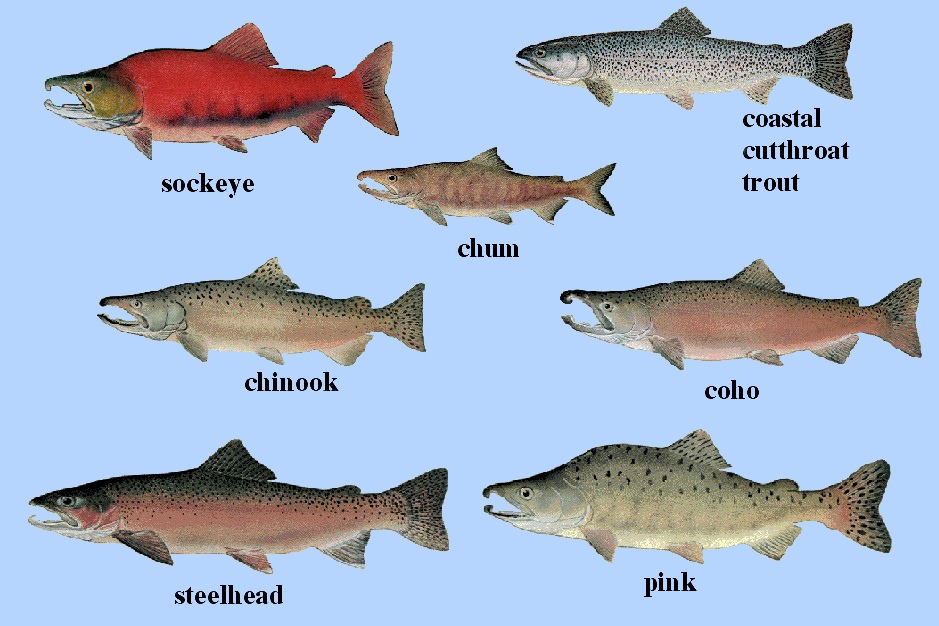|
Denaʼina
The Denaʼina ( ; Inland Denaʼina: ; Upper Inlet Denaʼina: ; ), or formerly Tanaina (), are an Alaska Native Athabaskan people. They are the original inhabitants of the south central Alaska region ranging from Seldovia in the south to Chickaloon in the northeast, Talkeetna in the north, Lime Village in the northwest and Pedro Bay in the southwest. The Denaʼina homeland () is more than in area.Patricia H. Partnow 2013Denaʼinaqʼ Huchʼulyeshi: The Denaʼina Way of Living. Anchorage Museum. They arrived in the south-central Alaska sometime between 1,000 and 1,500 years ago. They were the only Alaskan Athabaskan group to live on the coast. The Denaʼina have a hunter-gatherer culture and a matrilineal system. The Iditarod Trail's antecedents were the native trails of the Denaʼina and Deg Hitʼan Athabaskan Native Alaskans and the Inupiaq Inuit. Their neighbors are other Athabaskan peoples and Yupik peoples: Deg Hitʼan (northwest), Upper Kuskokwim (central north), ... [...More Info...] [...Related Items...] OR: [Wikipedia] [Google] [Baidu] |
Denaʼina Language
Denaʼina , also Tanaina, is the Athabaskan language of the region surrounding Cook Inlet. It is geographically unique in Alaska as the only Alaska Athabaskan language to include territory which borders salt water. Four dialects are usually distinguished: # Upper Inlet, spoken in Eklutna, Knik, Susitna, Tyonek # Outer Inlet, spoken in Kenai, Kustatan, Seldovia # Iliamna, spoken in Pedro Bay, Old Iliamna, Lake Iliamna area # Inland, spoken in Nondalton, Lime Village Of the total Denaʼina population of about 900 people, only 75–95 members still speak Denaʼina. James Kari has done extensive work on the language since 1972, including his edition with Alan Boraas of the collected writings of Peter Kalifornsky in 1991. Joan M. Tenenbaum also conducted extensive field research on the language in the 1970s. Ethnonym The word is composed of the , meaning 'person' and the human plural suffix . While the apostrophe which joins the two parts of this word ordinarily i ... [...More Info...] [...Related Items...] OR: [Wikipedia] [Google] [Baidu] |
Yup'ik
The Yupʼik or Yupiaq (sg & pl) and Yupiit or Yupiat (pl), also Central Alaskan Yupʼik, Central Yupʼik, Alaskan Yupʼik ( own name ''Yupʼik'' sg ''Yupiik'' dual ''Yupiit'' pl; Russian: Юпики центральной Аляски), are an Indigenous people of western and southwestern Alaska ranging from southern Norton Sound southwards along the coast of the Bering Sea on the Yukon-Kuskokwim Delta (including living on Nelson and Nunivak Islands) and along the northern coast of Bristol Bay as far east as Nushagak Bay and the northern Alaska Peninsula at Naknek River and Egegik Bay. They are also known as Cupʼik by the Chevak Cupʼik dialect-speaking people of Chevak and Cupʼig for the Nunivak Cupʼig dialect-speaking people of Nunivak Island. The Yupiit are the most numerous of the various Alaska Native groups and speak the Central Alaskan Yupʼik language, a member of the Eskimo–Aleut family of languages. As of the 2010 U.S. Census, the Yupiit population ... [...More Info...] [...Related Items...] OR: [Wikipedia] [Google] [Baidu] |
Chickaloon, Alaska
Chickaloon (''Nay’dini’aa Na’'' in Ahtna Athabascan; ''Nuk'din'itnu'' in Dena'ina) is a census-designated place (CDP) in Matanuska-Susitna Borough, Alaska, United States. It is part of the Anchorage, Alaska Metropolitan Statistical Area. The population was 254 at the 2020 census, down from 272 in 2010. The Alaska Native people of Chickaloon are a mixture of Ahtna and Dena'ina Athabaskan. On May 31, 2021, an M6.1 Earthquake struck Chickaloon. Geography Chickaloon is located at (61.793994, -148.482733). According to the United States Census Bureau, the CDP has a total area of , of which is land and (1.05%) is water. Demographics Chickaloon first appeared on the 1930 U.S. Census as an unincorporated village. It appeared again on the 1940 & 1960 censuses, but was not returned separately in 1950, 1970 & 1980. It returned again beginning in 1990, when it was made a census-designated place. As of the census of 2000, there were 213 people, 87 households, and 58 fami ... [...More Info...] [...Related Items...] OR: [Wikipedia] [Google] [Baidu] |
Ahtna People
The Ahtna (also Ahtena, Atna, Ahtna-kohtaene, or Copper River) are an Alaska Native Alaskan Athabaskans, Athabaskan people of the Athabaskan languages, Athabaskan-speaking ethnolinguistic group. The people's homeland called Atna Nenn', is located in the Copper River (Alaska), Copper River area of southern Alaska, and the name Ahtna derives from the local name for the Copper River. The total population of Ahtna is estimated at around 1,427. Their neighbors are other Na-Dené-speaking and Yupik peoples: Dena'ina people, Dena'ina (west), Koyukon people, Koyukon (a little part of northwest), Tanana peoples, Lower Tanana (north), Tanana peoples, Tanacross (north), Tanana peoples, Upper Tanana (northeast), Southern Tutchone people, Southern Tutchone (southeast, in Canada), Tlingit people, Tlingit (southeast), Eyak people, Eyak (south), and Chugach Sugpiaq (south). Synonymy The name ''Ahtena'', also written as ''Ahtna'' and ''Atnatana'', translates as "ice people." In some documentat ... [...More Info...] [...Related Items...] OR: [Wikipedia] [Google] [Baidu] |
Iliamna, Alaska
Iliamna (Dena'ina language, Dena'ina: ) is a census-designated place (CDP) in Lake and Peninsula Borough, Alaska, Lake and Peninsula Borough, Alaska, United States. The population was 108 at the 2020 United States census, 2020 census, slightly down from 109 in 2010. History Iliamna was originally the name of an Athabaskan village at the point where the Iliamna River flows into Iliamna Lake, about east of present-day Iliamna. That site is now called Old Iliamna (Denaʼina language, Dena'ina: ''Nuch'ak'dalitnu’''). In 1935, the residents of Old Iliamna moved to the present-day location. The first sport fishing lodge in Iliamna was built in the 1930s, and the second was built in the 1950s. Many more were built later in the 20th century. Iliamna's economy has two main elements: subsistence fishing and hunting and sport fishing lodges. Year-round residents largely pursue subsistence activities, while summer workers from other areas work in the lodges. Around 1913, Herman Gartel ... [...More Info...] [...Related Items...] OR: [Wikipedia] [Google] [Baidu] |
Seldovia, Alaska
Seldovia (Alutiiq: ; Dena'ina: ''Angidahtnu''; ) is a city in Kenai Peninsula Borough, Alaska, United States. Its population was 255 at the 2010 census, down from 286 in 2000. It is located along Kachemak Bay southwest of Homer. There is no road system connecting the town to other communities, so all travel to Seldovia is by airplane or boat. The Alaska Native people of Seldovia make up approximately one quarter of the population and have ancestors of Aleut and Alutiiq (Sugpiaq) descent, as well as some Dena'ina. History The native residents are mixed Dena'ina Athabaskan Indian and Alutiiq (Sugpiaq) Eskimo. In 1787 or 1788 a Russian fur trade post named Aleksandrovskaia was established at today's Seldovia by hunting parties under Evstratii Ivanovich Delarov, of the Shelikhov-Golikov company, precursor of the Russian-American Company. Although there has been little definitive archeological evidence of human habitation at Seldovia prior to the 1800s, it is said the e ... [...More Info...] [...Related Items...] OR: [Wikipedia] [Google] [Baidu] |
Yupik Peoples
The Yupik (; ) are a group of Indigenous or Aboriginal peoples of western, southwestern, and southcentral Alaska and the Russian Far East. They are related to the Inuit and Iñupiat. Yupik peoples include the following: * Alutiiq, or Sugpiaq, of the Alaska Peninsula and coastal and island areas of southcentral Alaska. * Yupʼik or Central Alaskan Yupʼik of the Yukon–Kuskokwim Delta, the Kuskokwim River, and along the northern coast of Bristol Bay as far east as Nushagak Bay and the northern Alaska Peninsula at Naknek River and Egegik Bay in Alaska. * Siberian Yupik, including Naukan, Chaplino,Achirgina-Arsiak, Tatiana"Northeastern Siberian: Yupik (Asiatic Eskimo)."''Alaska Native Collections.'' 1996. Retrieved 20 July 2012. and—in a linguistic capacity—the Sirenik of the Russian Far East and St. Lawrence Island in western Alaska. Population The Yupʼik people are by far the most numerous of the various Alaska Native groups. They speak the Central Alaskan Y ... [...More Info...] [...Related Items...] OR: [Wikipedia] [Google] [Baidu] |
Iditarod Trail
The Iditarod Trail, also known historically as the Seward-to-Nome Trail, is a thousand-plus mile (1,600 km) historic and contemporary trail system in the US state of Alaska. The trail began as a composite of trails established by Alaska natives, Alaskan native peoples. Its route crossed several mountain ranges and valleys and passed through numerous historical settlements en route from Seward, Alaska, Seward to Nome, Alaska, Nome. The Nome Gold Rush, discovery of gold around Nome brought thousands of people over this route beginning in 1908. Roadhouses for people and dog barns sprang up every 20 or so miles. By 1918 World War I and the lack of 'gold fever' resulted in far less travel. The trail might have been forgotten except for the 1925 Diphtheria, diphtheria outbreak in Nome. By making use of Dog sled, dog sleds, twenty drivers and teams carried the life-saving serum in 127 hours. Today, the Iditarod Trail Sled Dog Race serves to commemorate the part the trail and its ... [...More Info...] [...Related Items...] OR: [Wikipedia] [Google] [Baidu] |
Early Indian Languages Alaska
Early may refer to: Places in the United States * Early, Iowa, a city * Early, Texas, a city * Early Branch, a stream in Missouri * Early County, Georgia * Fort Early, Georgia, an early 19th century fort Music * Early B, stage name of Jamaican dancehall and reggae deejay Earlando Arrington Neil (1957–1994) * Early James, stage name of American singer-songwriter Fredrick Mullis Jr. (born 1993) * ''Early'' (Scritti Politti album), 2005 * ''Early'' (A Certain Ratio album), 2002 * Early Records, a record label Other uses * Early (name), a list of people and fictional characters with the given name or surname * Early effect, an effect in transistor physics * Early, a synonym for ''hotter'' in stellar classification In astronomy, stellar classification is the classification of stars based on their stellar spectrum, spectral characteristics. Electromagnetic radiation from the star is analyzed by splitting it with a Prism (optics), prism or diffraction gratin ... See also * * ... [...More Info...] [...Related Items...] OR: [Wikipedia] [Google] [Baidu] |
Upper Kuskokwim People
The Upper Kuskokwim people or Upper Kuskokwim Athabaskans, Upper Kuskokwim Athabascans ( own native name ), and historically Kolchan, Goltsan, Tundra Kolosh, and McGrath Ingalik are an Alaskan Athabaskan people of the Athabaskan-speaking ethnolinguistic group. First delineation of this ethnolinguistic group was described by anthropologist Edward Howard Hosley (who has specialized in the study of Alaskan Athabaskan cultures) in 1968, as Kolchan. According to Hosley, "Nevertheless, as a group possessing a history and a culture differing from those of its neighbours, the Kolchan deserve to be recognized as an independent group of Alaskan Athapaskans."Edward Hosley 1968The Kolchan: delineation of a new Northern Athapaskan Indian group They are the original inhabitants of the Upper Kuskokwim River villages of Nikolai, Telida, and McGrath, Alaska. About 25 of a total of 100 Upper Kuskokwim people still speak the language. They speak a distinct Athabaskan language (as Upper Kuskokwim ... [...More Info...] [...Related Items...] OR: [Wikipedia] [Google] [Baidu] |
Hunter-gatherer
A hunter-gatherer or forager is a human living in a community, or according to an ancestrally derived Lifestyle, lifestyle, in which most or all food is obtained by foraging, that is, by gathering food from local naturally occurring sources, especially wild edible plants but also insects, Fungus, fungi, Honey hunting, honey, Eggs as food, bird eggs, or anything safe to eat, or by hunting game (pursuing or trapping and killing Wildlife, wild animals, including Fishing, catching fish). This is a common practice among most vertebrates that are omnivores. Hunter-gatherer Society, societies stand in contrast to the more Sedentism, sedentary Agrarian society, agricultural societies, which rely mainly on cultivating crops and raising domesticated animals for food production, although the boundaries between the two ways of living are not completely distinct. Hunting and gathering was humanity's original and most enduring successful Competition (biology), competitive adaptation in the nat ... [...More Info...] [...Related Items...] OR: [Wikipedia] [Google] [Baidu] |






